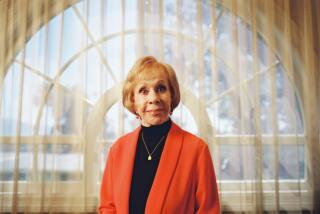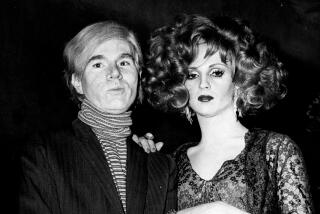Carol Channing, Broadway star best known for ‘Hello, Dolly!’ performance, dies at 97
Carol Channing, the Broadway star best known for her enduring portrayal of the meddlesome matchmaker Dolly Gallagher Levi in the musical “Hello, Dolly!,” has died. She was 97.
Channing, who won three Tony Awards, including one for lifetime achievement, died of natural causes early Tuesday in Rancho Mirage,her publicist and friend B. Harlan Boll said.
For the record:
7:25 a.m. Jan. 15, 2019An earlier version of this article stated that Pearl Bailey led an all-black production of “Hello, Dolly!” in 2004. It was in 1975.
Her first Tony was for “Hello, Dolly!,” which opened in 1964. She went on to appear in the play at least 5,000 times and once said it had become more real to her than the world beyond the stage.
Throughout her career, critics described her as a singular talent, starting with her physical appearance. Her saucer eyes and fringe of false lashes, froggy voice, blond bubble wigs and painted red lips left them straining for new ways to say she looked like a Kewpie doll.
As Dolly, Channing gave full sway to her broad comic acting style with her oversized gestures, cavernous smiles and well-timed pauses.
“Carol’s talent was unique,” said Jerry Herman, who wrote the music and lyrics for “Hello Dolly!” “She created the character of Dolly and she made the show, as much as any of us did.”
“She had an amazing ability to perform the same material day after day, year after year and keep it as fresh as opening night,” said Herman, who also supervised the music in three revivals of “Hello, Dolly!”
In a tweet Tuesday, Barbra Streisand described Channing as “a true life-force … a kind and effervescent woman who never allowed the parade to pass her by.” Actress Sandra Bernhard tweeted that she had drawn inspiration from Channing as a child. “I saw her in Hello Dolly when I was 8 and she changed my DNA,” Bernhard said.
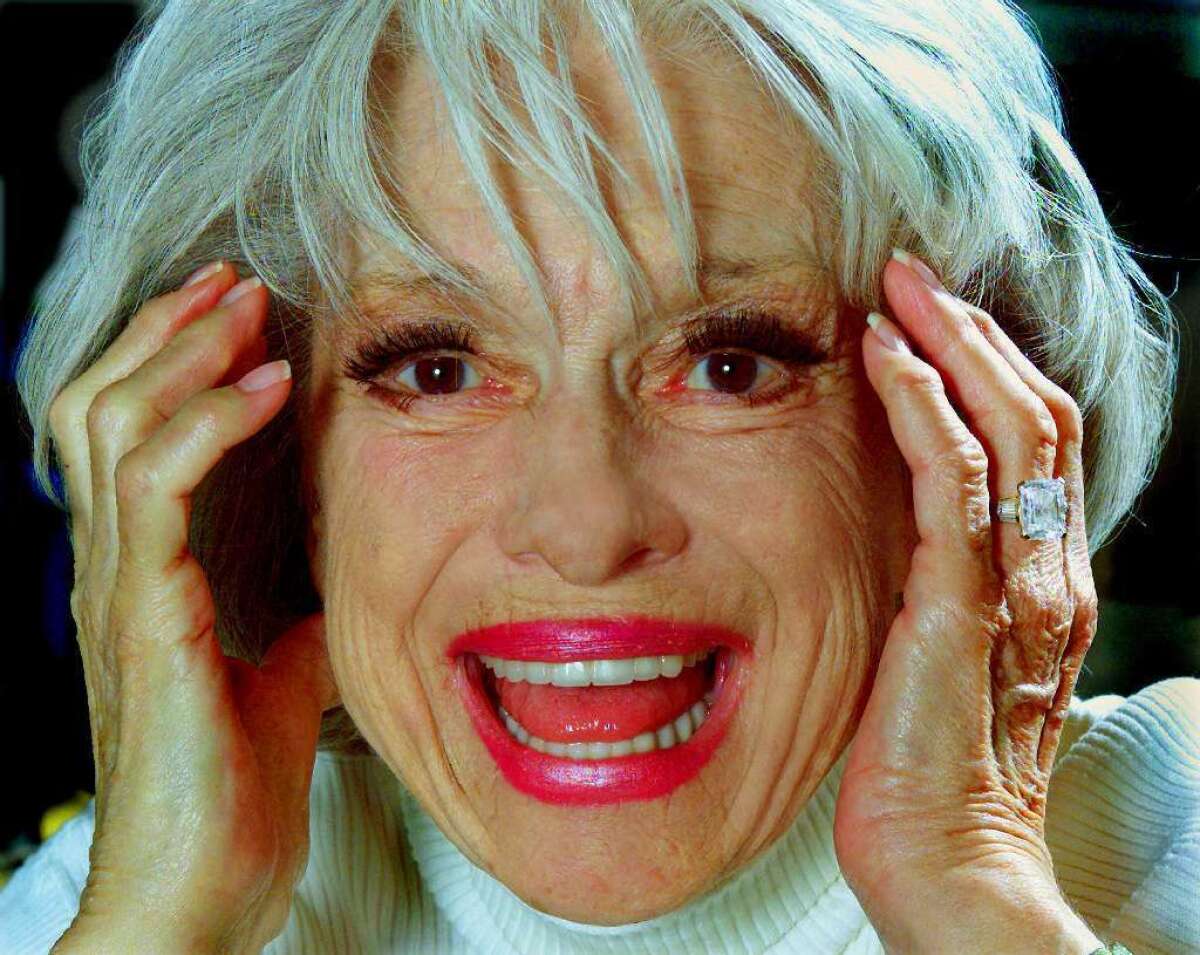
On opening night of the play in New York City, audience members stood by their seats after the final bows, “hoping a miracle would happen, the curtain would rise and the show would go on again,” the late Hedda Hopper wrote in the Los Angeles Times in January 1964. “Broadway said, ‘Hello, Dolly!’ It will be a long time before it says good-bye.”
Originally, the role was written with Ethel Merman in mind. Channing, who was second choice, captured it at mid-career and made it her own.
The original production toured for several years after the New York run. Major revivals followed in 1977, 1982 and 1994 when Channing was 73. Theater critics were not always impressed by the show’s return engagements.
“If ‘Dolly!’ were a hotel, you’d say it had gone downhill,” wrote Dan Sullivan in the Los Angeles Times in 1977, when the first revival opened in Los Angeles. The production seemed stiff and predictable, Sullivan complained.
The reviews were more favorable when Channing was a senior citizen and an undisputed stage legend.
“Time has taken some physical toll,” Vincent Canby wrote about Channing in a New York Times review in 1995. She is too thin, she can’t move the way she used to and her voice wobbles, Canby wrote. But he encouraged his readers to go see her anyway.
“Her phrasing, enunciation and timing, her delicious intelligence and her commitment to the performance must still ravish audiences,” Canby wrote. “Celebrate her.”
Channing was often asked why she kept going back to her most famous role. “We don’t have Hamlet or Lady Macbeth. Dolly is our classic,” Channing said in a 1995 interview with Theater Week magazine. The show did take on a life of its own, eventually. Pearl Bailey led an all-black cast in a 1975 Broadway production.
Dolly was actually the second of two roles that made Channing’s reputation. The first was Lorelei Lee, the gold-digging dingbat in “Gentlemen Prefer Blondes” which opened on Broadway in 1949. The show’s popular song, “Diamonds Are a Girl’s Best Friend,” often played as Channing’s entrance music until the title song from “Hello Dolly!” trumped it.
“Carol Channing had only two major roles to her credit,” Miles Kreuger, president of the Los Angeles-based Institute of the American Musical, said in a 2006 interview with the Los Angeles Times. “But she is regarded as one of the great stars of American theater. That in itself is a phenomenon.”
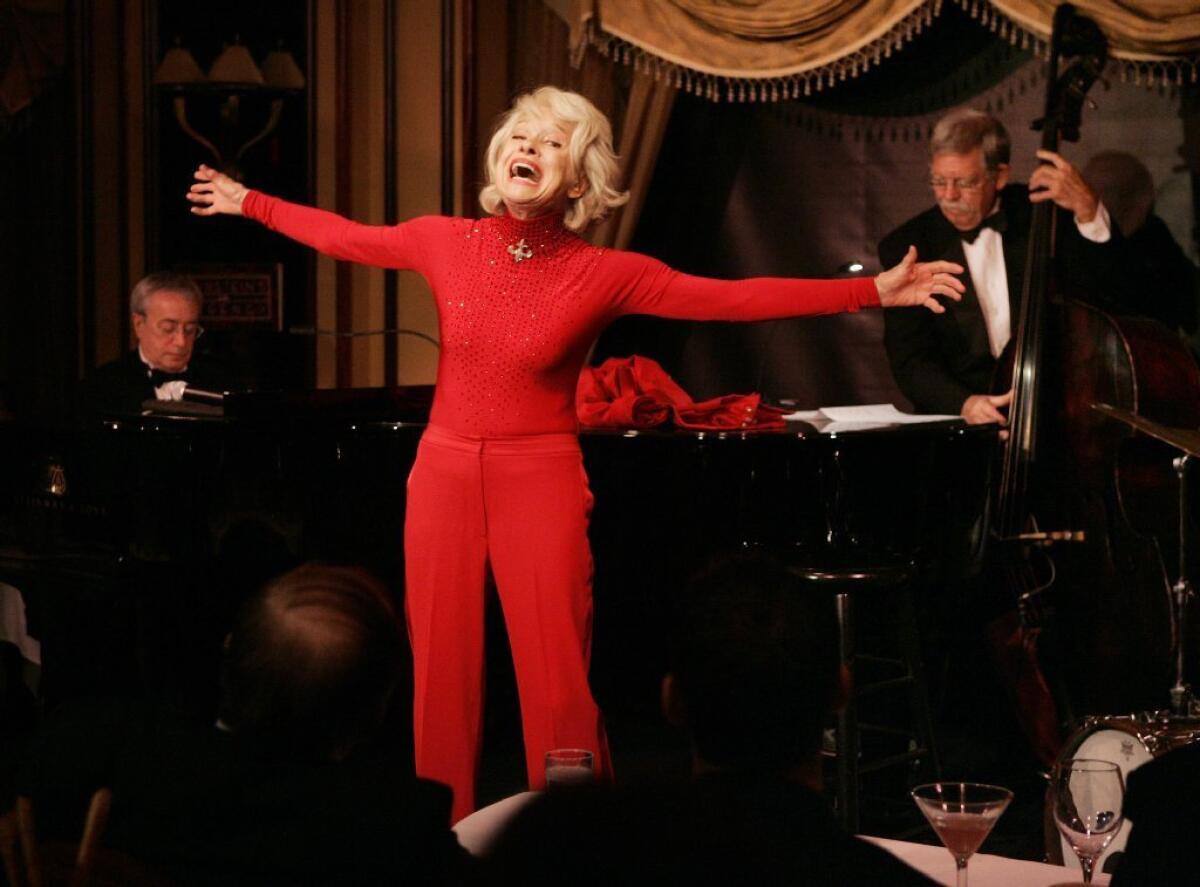
Channing, who was the subject of the 2012 retrospective documentary, “Carol Channing: Larger Than Life,” was modest about her own success.
“It’s lucky when you have a character or a song that’s identified with you,’’ Channing said in a 1991 interview with the Phoenix Gazette. “People know who you are.”
Luck was part of it. Working eight performances a week for months on end was the rest. In her years as “Dolly,” she regularly battled laryngitis. Once in the mid-1980s, during a performance of “Legends!”, a comedy about feuding actresses that co-starred Mary Martin, Channing tripped over a stage prop, fell, broke her arm, got up and went on with the show.
She was often asked why she worked so hard, especially as she edged into her 70s.
“It’s happiness. What am I supposed to save myself for? This is a pleasure,” she told Vanity Fair magazine in 1995. Then age 74, she posed for the magazine wearing little more than a feather boa. She attributed her remarkable physical fitness in part to her diet. From the early 1960s, to combat allergies she said, she carried silver containers filled with her own food to every dinner engagement.
“It was real when it started,” Herman said of Channing’s food allergies. Later, she told him her condition improved, but she still carried her own food. “It became an eccentricity,” Herman said. The silver containers became part of her image.
Channing also credited her good health to her upbringing. Her parents, George and Adelaide Channing, were devout Christian Scientists who did not drink and ignored birthdays because age represented the material world and therefore was an illusion, they taught her.
As a child she hated missing birthday celebrations but later in life she changed her mind. “Not having to tell my age is a favorite part of my religion,” she once joked in an interview with the New York Times.

Her passion for the stage turned Channing into a nomad. For years she and her then-husband Charles Lowe, who was also her manager, lived in hotel rooms. She traveled with 20 suitcases filled with books, photographs and keepsakes, and she had a separate case for false eyelashes. She sent an assistant ahead to unpack so the hotel room would look homey when she arrived.
Through her career she alternated between musicals and stage revues, starring in 1973’s “Lorelei,” a less successful sequel to “Gentlemen Prefer Blondes,” and “Jerry’s Girls” a 1985 revue with songs by Herman, among others.
A number of the shows she headlined got mixed reviews. Herman recalled Channing in “The Vamp” of 1955. The show had problems but Channing was nominated for a Tony Award for her performance. “No matter how bad a production was, Carol treated it like gold,” Herman said.
Hollywood, though, was not as friendly to Channing. Twice she was passed over for the film versions of roles she had made famous on Broadway.
Marilyn Monroe, not Channing, was cast as Lorelei Lee in the 1953 movie version of “Gentlemen Prefer Blondes.” Channing’s other big stage role went to Barbra Streisand in the 1969 movie version of “Hello, Dolly!”
Losing the movie role of Dolly was particularly devastating, Herman said of Channing.
“What opinion would you have if someone … kidnapped your baby?” Channing wrote in “Just Lucky I Guess,” her 2002 memoir. “My baby was ‘Hello, Dolly!’”
Most movie producers considered her acting style “too broad for the screen,” Herman said. She had one major success, in a supporting role in the 1967 jazz-age musical film “Thoroughly Modern Millie.” She won a Golden Globe for her performance.
She did better with voice work for animated films. She was Mrs. Fieldmouse in the animated “Hans Christian Anderson’s Thumbelina,” (1994) and was the voice of a ceiling fan in “The Brave Little Toaster Goes To Mars” (1998), among other roles. She also narrated recordings of children’s stories including “Winnie the Pooh” and “Madeleine.” She made frequent appearances on television specials and talk shows as well as guest appearances on popular sitcoms, including “The Love Boat.”
In 1970, she performed the halftime show at Super Bowl IX — a rousing version of “When The Saints Go Marching In.” Until then, only marching bands had been used as halftime entertainment at the game.
Hard as she worked for her top awards, she kept many of them in rented storage spaces. One space, in Northern California, was robbed in 2004. Channing lost a Tony and a Golden Globe along with $50,000 worth of costumes, her publicist, Harlan Boll, said.
Earlier, in 2001 as she prepared to auction costumes, hats and wigs she had worn on stage to raise money for 9/11 disaster relief, she discovered that her red dress from the original Broadway production of “Hello, Dolly!” was missing. So was the white dress she wore for the original production’s finale.
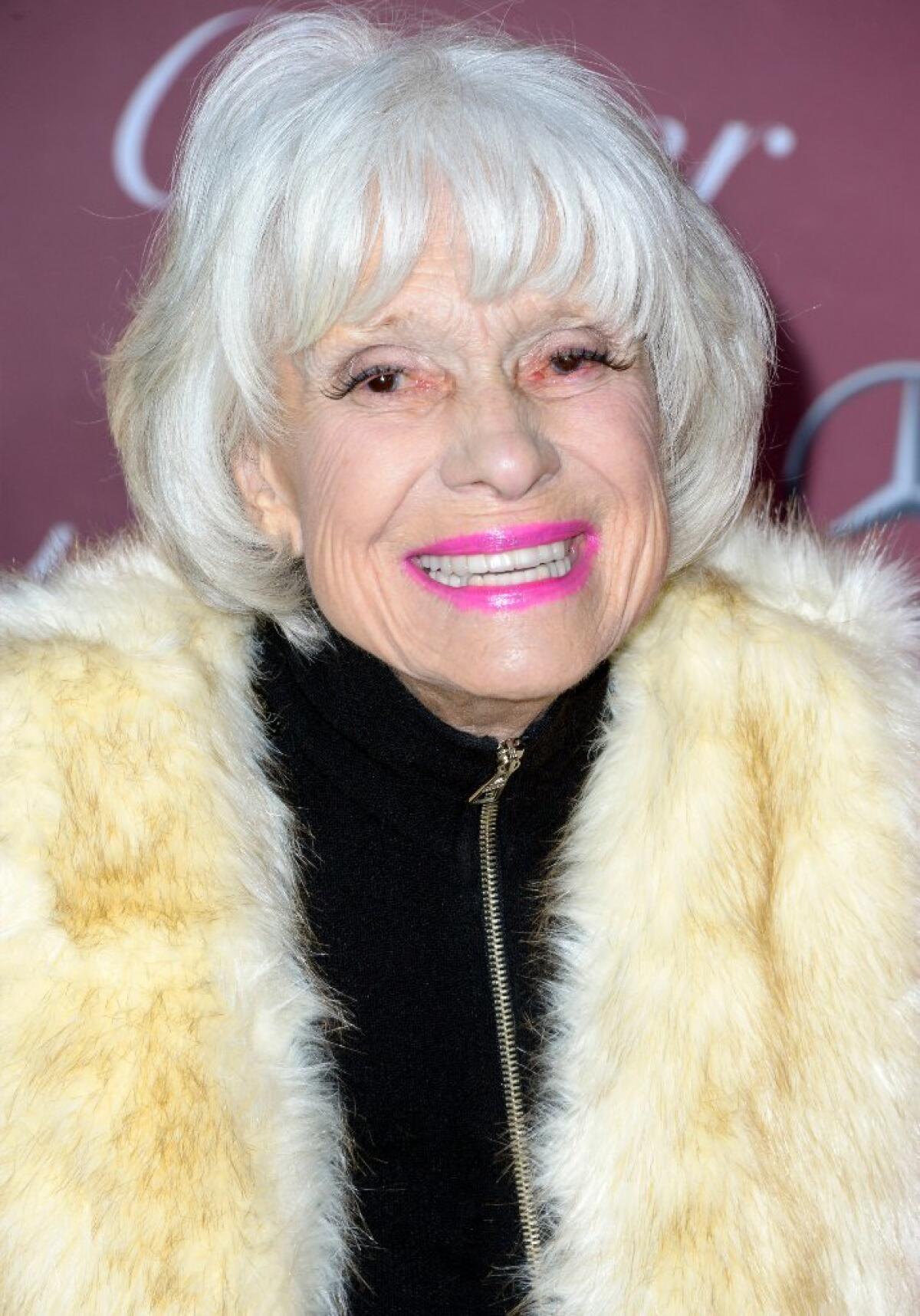
Born in Seattle on Jan. 31, 1921, Channing was an only child. Her father was an editor for the Seattle Star newspaper and a leader in the Christian Science church.
The family moved to San Francisco when George Channing was named editor of all church publications.
She was a teenager before Channing learned, from her mother, that her father was the son of a mixed-race marriage. Carol had an African American grandmother. She said her mother told her about her paternal grandmother before she went away to college.
Channing was quiet about her family heritage until late in her career. In a 2002 interview with Jet magazine she explained her mixed-race background and added, “I thought I had the greatest genes in show biz.”
She attended Bennington College in Vermont as a drama and dance major but dropped out to start her career.
She got small parts in Broadway shows and did song-and-dance work at supper clubs in the Catskill Mountains but things didn’t click. She returned to the West Coast, moved to Los Angeles and put on one-woman musical revues.
She landed a role in “Lend an Ear,” which opened on Broadway in 1948. Largely on the strength of her performance, she was cast as Lorelei Lee in “Gentlemen Prefer Blondes,” which made her a star.
Channing married four times. Her first marriage to novelist Theodore Naidish ended in divorce. She then married Alexander Carson of the Ottawa Roughriders Canadian football team. The couple had one child, a son named Channing, before they divorced.
Her longest marriage was to Lowe, whom she wed in 1956. He legally adopted her son, Channing G. Lowe, a syndicated editorial cartoonist.
The couple remained together for 41 years until Channing filed for divorce in 1998.
She married Harry Kullijian, a junior high school classmate, in 2003, when she was 82 and he was 83. The couple settled in Rancho Mirage. He died in 2011.
Rourke is a former Times staff writer
More to Read
Start your day right
Sign up for Essential California for the L.A. Times biggest news, features and recommendations in your inbox six days a week.
You may occasionally receive promotional content from the Los Angeles Times.
